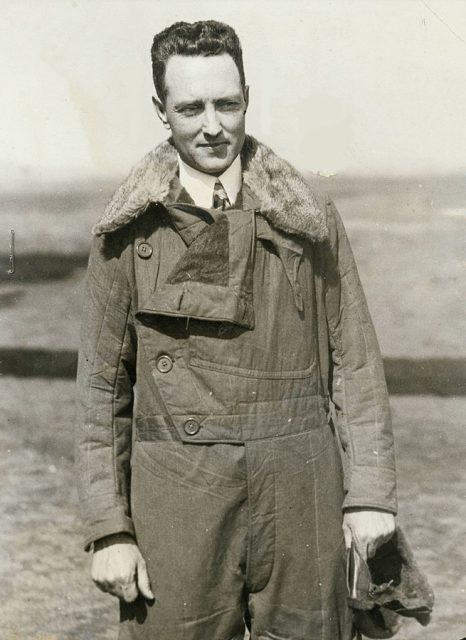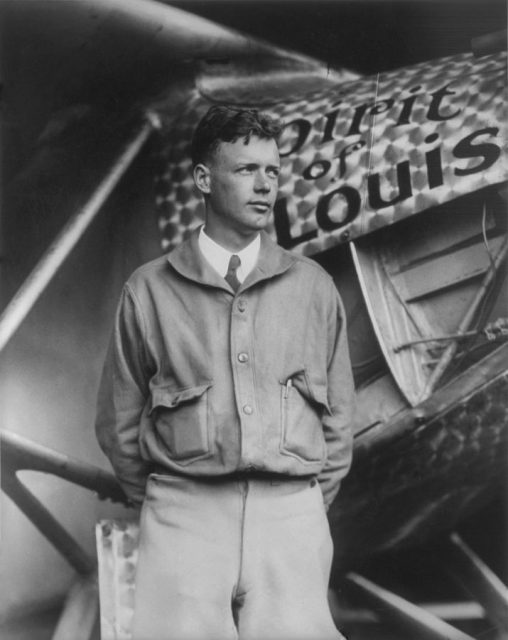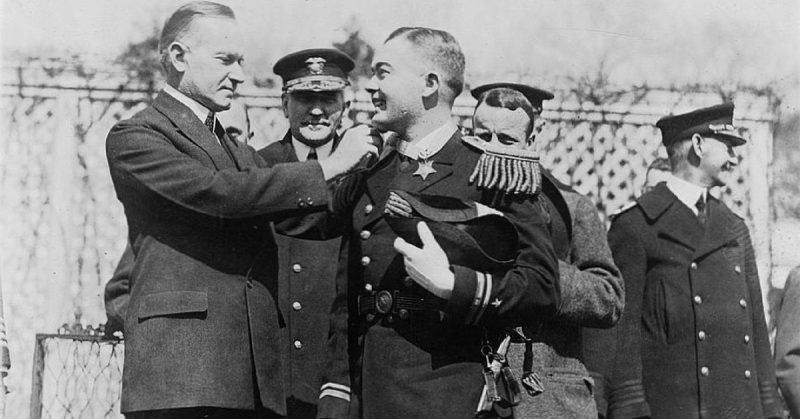When people think of the Medal of Honor, they usually associate it with inexplicable acts of gallantry committed under duress and in the face of an enemy. Jumping on grenades to save their fellow Marines; charging the enemy alone during a last-ditch stand or sacrificing a life as a POW are all actions that come to mind.
However, before 1940 different standards led to over 190 men receiving the nation’s highest military honor – in peacetime!
Their actions required no less gallantry in many cases, yet military history has often forgotten about this select group of men. From boiler room explosions; tsunamis and even the first solo non-stop flight across the Atlantic the medals were handed out. But when life ends, it makes no difference whether it was in peacetime or war. Military service is inherently dangerous, and history can still commemorate the gallantry of men awarded the honor when no enemy was present.
The Navy is a Dangerous Place
By far, the United States Navy seemed to be the most likely place to pick up the Medal of Honor as it turns out boiler rooms are a dangerous place.
In 1915, Ensign Robert Cary was on board the USS San Diego when the boilers in the No. 2 fireroom exploded. Despite the steam and heat, Cary rushed into action and held open the doors that were being electronically closed by the bridge. Screaming for his colleagues to escape, three men were saved by his direct action. Lest people think Cary lacked gallantry, he was awarded the Navy Cross in WWI and after service in WWII retired at the rank of Rear Admiral.
If there is any doubt that boilers were dangerous, then consider the actions of two-time Medal of Honor recipient John King.
One of only 19 men to receive the honor twice, both of his acts were due to boiler explosions. The citations are vague, but in 1901 on board the USS Vicksburg a boiler explosion caused great peril to the ship and the crew. For his actions that day, King was awarded the Medal of Honor and received the same award eight years later when serving on the USS Salem. However, the Navy had more problems than exploding boilers.
Seaman George Breeman was awarded the Medal of Honor when the munitions exploded on board the USS Kearsarge. Seemingly obvious, drowning from man overboard scenarios was a common occurrence in the late 1800’s. Multiple seamen were given the Medal of Honor for rescuing fellow sailors from drowning. However, some awards are inexplicable.
Ensign Thomas Ryan was given the nation’s highest military honor for rescuing a woman from a hotel in Japan after an earthquake in 1923. Matthew Gillick and John Auer were given the honor when they jumped into the water to save a French boy who had fallen from a pier. A different time and different standards for the Navy and the nation’s highest military honor – but they were recipients all the same.

Certainly not a Combat Award
While it no doubt takes courage and gallantry to charge into a burning boiler room or jump into stormy seas to save a shipmate, other recipients took a unique path to the medal. Perhaps one of the more famous was Charles Lindbergh who was awarded the Medal for making the first solo non-stop transatlantic flight. Unfortunately, his success turned to infamy when, known as the “Crime of the Century,” his son was kidnapped and murdered in a very public ransom case.
Richard E. Byrd and Floyd Bennett were both awarded the Medal of Honor for making what was considered the first successful heavier than air flight to the North Pole and back. The men set out in a Fokker Tri-Motor, and by the time they returned later the same day they were national heroes. Awarded the Medal of Honor, controversy arose when the European press noted that they had not been gone long enough to have reached the North Pole and back. Subsequent reviews of erased portions of a flight journal gave credence to the skepticism. All the same, their actions are recorded in the halls of military history.

Not all Medals of Honor seem equal
When the Medal of Honor was created around the time of the Civil War, it was often handed out for actions in combat that do not measure up to the modern standard.
Generals were given the medal for basically not falling off their horse during the heat of battle. If an enemy flag was captured, that was often merit enough as well. They were actions though that took place in the midst of combat. With certainty, many of the Medals of Honor awarded during the Civil War occurred in the face of the enemy and required gallantry worthy of the title.
Then again, there is Major General Adolphus Greely. He was another peacetime recipient of the Medal of Honor for a “lifetime of service” because – why not? However, storming into a burning boiler room, pulling a pilot from burning wreckage and jumping into tsunami raged seas are all acts of gallantry that were only missing the presence of an enemy.
Perhaps it was the courage and fortitude displayed during WWII that required a higher standard for the Medal to be awarded. During that conflict men were jumping on grenades, purposely sinking with their ship to protect secrets or taking on enemy aircraft at odds of 10 to 1 or greater. The Medal of Honor might have become a more rare occurrence during recent decades but every recipient holds a place in military history.
It is for students to judge their worth, but a Medal of Honor they do possess.
